Vol. 1, No. 6
- - - - - - - - - - - - - - - - - - - - - - - - - - - - - - - - - - - - - - - - - - - - - - - -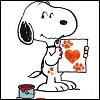 In this issue:
In this issue:
reviews of Villains United #1-4 and Swamp Thing: Love in Vain / notes on reviving Amazing Heroes, Perry White redux, Katana, my first CrossGen book, linkbloggers, and more / rants about House of M (after which I promise to stop complaining)
- - - - - - - - - - - - - - - - - - - - - - - - - - - - - - - - - - - - - - - - - - - - - - - -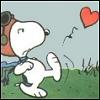
reviews
Villains United #1-4 (DC Comics)
Gail Simone (Writer) / Dale Eaglesham (Penciler, issues 1, 2, and 4) / Val Semeiks (Penciler, issue 3) / Wade von Grawbadger (Inker, issues 1, 2, and 4) / Prentis Rollins (Inker, issue 3) / Sno-Cone (Colorist) 
 Let us now praise Gail Simone.
Let us now praise Gail Simone.
I’m one of those Infinite Crossover Zombies that hasn’t yet succumbed to what Kurt aptly dubs pre-Infinite Crisis Fatigue. Not only am I devouring all five Countdown series, I
 am actually wringing my hands with delight at the prospect of a full-year of post-Crisis 52*. I’ll try to come up with a high-falutin’-sounding justification for my slavering devotion to Didio-era DC at some future date. For now, I just want to heap laurels on Gail Simone’s Villains United, an ingeniously subversive series that is probably the best of the five Countdown minis (though Day of Vengeance is also excellent).
am actually wringing my hands with delight at the prospect of a full-year of post-Crisis 52*. I’ll try to come up with a high-falutin’-sounding justification for my slavering devotion to Didio-era DC at some future date. For now, I just want to heap laurels on Gail Simone’s Villains United, an ingeniously subversive series that is probably the best of the five Countdown minis (though Day of Vengeance is also excellent). Where to begin? How about with the most villainous of the real villains of the series: Lex Luthor. Simone writes Luthor not simply as a brilliant megalomaniac, but as a sort of magnanimous ubermensch who, like Nietzsche’s prototype, is too persuaded of his own superiority to be bothered with pettiness or ressentiment. With Luthor, this kind of transcendence of his surroundings is always edged with calculation, but the effect is still thrilling. Watching Luthor step lightly through the minefield of the Society he is building through intimidation and manipulation is almost like watching a solo dance performance: his cunning is precisely that nimble.
Where to begin? How about with the most villainous of the real villains of the series: Lex Luthor. Simone writes Luthor not simply as a brilliant megalomaniac, but as a sort of magnanimous ubermensch who, like Nietzsche’s prototype, is too persuaded of his own superiority to be bothered with pettiness or ressentiment. With Luthor, this kind of transcendence of his surroundings is always edged with calculation, but the effect is still thrilling. Watching Luthor step lightly through the minefield of the Society he is building through intimidation and manipulation is almost like watching a solo dance performance: his cunning is precisely that nimble.
Only a scripter as good as Simone could produce an effect like this. Luthor is an intensely verbal character (since his voice and intellect literally are his powers), and in the hands of a lesser writer, the dialogue that is meant to indicate Luthor’s “genius” often feels merely gestural because it just doesn’t sound convincingly urbane, witty, or subtle.  In Simone’s hands, however, we feel Luthor’s charisma every time he speaks. Dr. Psycho’s foaming at the mouth makes him an ideal foil for Luthor’s decorous restrained leadership, and their interactions are a hilarious treat. Of the rest of the Society’s inner circle, the Calculator, Deathstroke, and Black Adam are all suitably shifty, but Talia is the one I’ve got my eye on. If I know Gail (and I don’t, but I like to pretend), it’s only a matter of time before we see what’s lurking beneath the gal-Friday routine she’s been performing for Luthor.
In Simone’s hands, however, we feel Luthor’s charisma every time he speaks. Dr. Psycho’s foaming at the mouth makes him an ideal foil for Luthor’s decorous restrained leadership, and their interactions are a hilarious treat. Of the rest of the Society’s inner circle, the Calculator, Deathstroke, and Black Adam are all suitably shifty, but Talia is the one I’ve got my eye on. If I know Gail (and I don’t, but I like to pretend), it’s only a matter of time before we see what’s lurking beneath the gal-Friday routine she’s been performing for Luthor.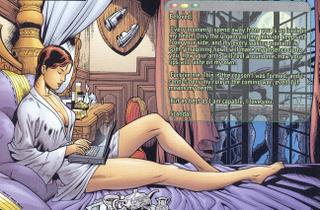 Meanwhile, over on the Secret Six team, Simone is carefully assembling what might become the basis of an incredible Suicide Squad relaunch--particularly given the recent reappearance of Amanda Waller in the pages of JSA. In the space of only a few issues, she’s built one of the most appealing groups of thugs, vamps, and misfits I’ve ever beheld. I haven’t the foggiest idea who or what Scandal might be, but the slow unraveling of her secrets has me intrigued.
Meanwhile, over on the Secret Six team, Simone is carefully assembling what might become the basis of an incredible Suicide Squad relaunch--particularly given the recent reappearance of Amanda Waller in the pages of JSA. In the space of only a few issues, she’s built one of the most appealing groups of thugs, vamps, and misfits I’ve ever beheld. I haven’t the foggiest idea who or what Scandal might be, but the slow unraveling of her secrets has me intrigued. 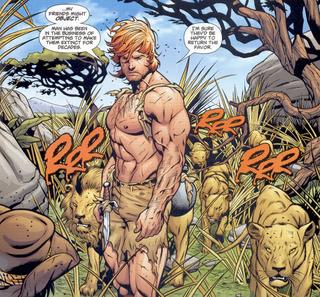 Catman is not only cool, Simone has made him into the best type of hero: the loser who wants to make good. Deadshot is a riot. Ragdoll is the best character redesign of the year. Simone’s handling of Parademon as an Apokoliptic trauma survivor in search of happiness is so weird and yet so right that I’m just totally speechless. And of course, Simone binds her anti-heroes together by inviting us to take a crack at the oldest chestnut of all: who is Mockingbird?
Catman is not only cool, Simone has made him into the best type of hero: the loser who wants to make good. Deadshot is a riot. Ragdoll is the best character redesign of the year. Simone’s handling of Parademon as an Apokoliptic trauma survivor in search of happiness is so weird and yet so right that I’m just totally speechless. And of course, Simone binds her anti-heroes together by inviting us to take a crack at the oldest chestnut of all: who is Mockingbird?  If the sheer number of double entendres per issue are any indication, Simone is also clearly having a lot of fun writing the Deadshot/Catman/Cheshire triangle, which is one of the book’s most subversive and delightful elements. Simone falls short of making this triangle explicitly “bisexual,” leaving the sparks between Blake and Lawton implicit instead--but just barely.
If the sheer number of double entendres per issue are any indication, Simone is also clearly having a lot of fun writing the Deadshot/Catman/Cheshire triangle, which is one of the book’s most subversive and delightful elements. Simone falls short of making this triangle explicitly “bisexual,” leaving the sparks between Blake and Lawton implicit instead--but just barely. 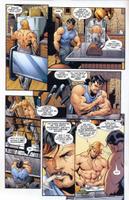
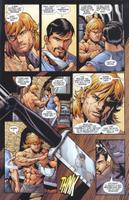 As many others have noticed as well (and you’d have to be blind not to) the beefcake breakfast sequence in issue #2 is a hilarious tongue-in-cheek comment on macho male bonding, from the knife that juts from the table to the cigarette afterward.
As many others have noticed as well (and you’d have to be blind not to) the beefcake breakfast sequence in issue #2 is a hilarious tongue-in-cheek comment on macho male bonding, from the knife that juts from the table to the cigarette afterward. The fact that Jade is eavesdropping on the entire scene adds yet another layer to the proceedings, and the subtle (and sometimes not so subtle) struggle that ensues between her and Lawton for Blake’s attention makes me giggle. The jaw-dropper that emerges at the end of issue #4 in the pillow-talk between Blake and Jade is the best sort of soapy fun, but it is also pregnant (so to speak) with less obvious shades of meaning (Jade's motives, I suspect, are more mixed than she lets on.) In other words, Simone does not just play this triangle for twists, laughs, or satiric effect. Lawton’s affection for his “cat-buddy” and Jade’s attraction to a man who looks very much like the father of her imperilled daughter hint at a genuine depth of feeling (though Jade and Lawton both talk a good game). Similarly, Cheshire’s jealous goading of Deadshot may seem like pure comedy, but the expression on her face when she learns about Lian's peril is not, and there’s something downright sweet about a hang-dog Lawton moping around with Scandal outside the lovers’ scratched up bedroom door.
The fact that Jade is eavesdropping on the entire scene adds yet another layer to the proceedings, and the subtle (and sometimes not so subtle) struggle that ensues between her and Lawton for Blake’s attention makes me giggle. The jaw-dropper that emerges at the end of issue #4 in the pillow-talk between Blake and Jade is the best sort of soapy fun, but it is also pregnant (so to speak) with less obvious shades of meaning (Jade's motives, I suspect, are more mixed than she lets on.) In other words, Simone does not just play this triangle for twists, laughs, or satiric effect. Lawton’s affection for his “cat-buddy” and Jade’s attraction to a man who looks very much like the father of her imperilled daughter hint at a genuine depth of feeling (though Jade and Lawton both talk a good game). Similarly, Cheshire’s jealous goading of Deadshot may seem like pure comedy, but the expression on her face when she learns about Lian's peril is not, and there’s something downright sweet about a hang-dog Lawton moping around with Scandal outside the lovers’ scratched up bedroom door.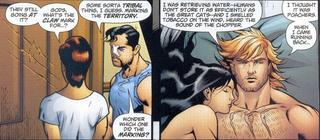 Like any good Shakespeare comedy, moreover, Villains United has a subplot in which a second grouping of characters reflects and implicitly comments on the primary romantic grouping. Okay, maybe Villains United isn’t exactly Shakespeare, but it does have a subplot centering on the bizarre relationship between a Parademon and his “clown” that expands this book’s challenging of normative relationships (personal and sexual) in a number of very interesting ways. I will try to abbreviate my comments on this utterly fascinating pair to two observations.
Like any good Shakespeare comedy, moreover, Villains United has a subplot in which a second grouping of characters reflects and implicitly comments on the primary romantic grouping. Okay, maybe Villains United isn’t exactly Shakespeare, but it does have a subplot centering on the bizarre relationship between a Parademon and his “clown” that expands this book’s challenging of normative relationships (personal and sexual) in a number of very interesting ways. I will try to abbreviate my comments on this utterly fascinating pair to two observations.  First, the fact that Parademon’s revelation that his love for “Clown” stems from the absence of humor on Apokolips is, in and of itself, a lovely comic book metaphor for the wasteland of isolation and the promise that love holds. The fact that this “love” is directed at a person that Parademon apparently understands to be only semi-human--a “clown” or a “doll”--says something also about how desire is warped by circumstances of extreme desperation and horror. And yet, one can’t help but feel a little touched by the uniqueness and purity of Parademon’s simple, universal desire, no matter how unconventional a form it takes.
First, the fact that Parademon’s revelation that his love for “Clown” stems from the absence of humor on Apokolips is, in and of itself, a lovely comic book metaphor for the wasteland of isolation and the promise that love holds. The fact that this “love” is directed at a person that Parademon apparently understands to be only semi-human--a “clown” or a “doll”--says something also about how desire is warped by circumstances of extreme desperation and horror. And yet, one can’t help but feel a little touched by the uniqueness and purity of Parademon’s simple, universal desire, no matter how unconventional a form it takes.  Second, Ragdoll’s perverse attempt to win his father’s approval by embarking on hundreds of surgeries to replace his normal joints with “fully rotating, self-lubricating implants,” so that he becomes “more limber than [his father or brother] could imagine” and now has skin that is constantly in danger of tearing, makes him an unbelievably cool cipher for the contortions that parental violence can inflict. Ragdoll’s pliable body is in this sense pitiable. However, it is also the source of his power. His desperation to please his father may have made him a freak, but as the amazing scene in issue #4 suggests, where Ragdoll breaks into H.I.V.E. headquarters by crawling through the sewer pipe, it is possible to transform freakishness into a “beautiful odiferous masterpiece” or as Ragdoll also calls it: “my aria.” I don’t know if Simone has read Henry Miller, D.H. Lawrence, or Georges Bataille, and I’m stretching a bit here, but Ragdoll (in all his polymorphously perverse majesty) verges on embodying the sort of progressive pornographic deviance their work celebrates. In other words: the Parademon-Ragdoll relationship? Bloody eff’in cool, Gail!
Second, Ragdoll’s perverse attempt to win his father’s approval by embarking on hundreds of surgeries to replace his normal joints with “fully rotating, self-lubricating implants,” so that he becomes “more limber than [his father or brother] could imagine” and now has skin that is constantly in danger of tearing, makes him an unbelievably cool cipher for the contortions that parental violence can inflict. Ragdoll’s pliable body is in this sense pitiable. However, it is also the source of his power. His desperation to please his father may have made him a freak, but as the amazing scene in issue #4 suggests, where Ragdoll breaks into H.I.V.E. headquarters by crawling through the sewer pipe, it is possible to transform freakishness into a “beautiful odiferous masterpiece” or as Ragdoll also calls it: “my aria.” I don’t know if Simone has read Henry Miller, D.H. Lawrence, or Georges Bataille, and I’m stretching a bit here, but Ragdoll (in all his polymorphously perverse majesty) verges on embodying the sort of progressive pornographic deviance their work celebrates. In other words: the Parademon-Ragdoll relationship? Bloody eff’in cool, Gail! Of course, things like the “beauty” of Ragdoll’s scatological aria are overlaid with a dark irony, since Ragdoll is, like most of these antiheroes, a murderer. Nonetheless, the subversive appeal of a series like this stems precisely from the fact that these characters are literally and figuratively operating outside of “the law”--that is, they operate not simply outside the laws of the state but outside the “unwritten” laws of restrictive social norms. The appeal of a series like this (for me at least) is that the antiheroes’ literal status as criminals is less important than the metaphorical “lawlessness” this status bestows. Simply put: I’m only moderately interested in the moral dilemmas of a team of bad-guy heroes. I am very interested, however, in the fact that these characters are “allowed” to behave in ways and to explore ideas that ordinary superheroes rarely get to precisely because there is often a tacit equation in mainstream comics between superheroes and normativity (they must set a moral example, etc., etc.). The X-Men are the celebrated exception to this “rule,” of course, and there are others too which I’ve written about before. By and large, however, the current world of traditional superhero comics remains extremely conservative, as was depressingly illustrated by DC’s recent hysteria over the “Gay Batman” pictures, not to mention the homosexual panic that radiates from Frank Miller’s All-Star Batman and Robin #1.
Of course, things like the “beauty” of Ragdoll’s scatological aria are overlaid with a dark irony, since Ragdoll is, like most of these antiheroes, a murderer. Nonetheless, the subversive appeal of a series like this stems precisely from the fact that these characters are literally and figuratively operating outside of “the law”--that is, they operate not simply outside the laws of the state but outside the “unwritten” laws of restrictive social norms. The appeal of a series like this (for me at least) is that the antiheroes’ literal status as criminals is less important than the metaphorical “lawlessness” this status bestows. Simply put: I’m only moderately interested in the moral dilemmas of a team of bad-guy heroes. I am very interested, however, in the fact that these characters are “allowed” to behave in ways and to explore ideas that ordinary superheroes rarely get to precisely because there is often a tacit equation in mainstream comics between superheroes and normativity (they must set a moral example, etc., etc.). The X-Men are the celebrated exception to this “rule,” of course, and there are others too which I’ve written about before. By and large, however, the current world of traditional superhero comics remains extremely conservative, as was depressingly illustrated by DC’s recent hysteria over the “Gay Batman” pictures, not to mention the homosexual panic that radiates from Frank Miller’s All-Star Batman and Robin #1. Clearly, Villains United is a series with many dimensions. Simone has seamlessly fused the violence and conspiracy of a good espionage thriller with the interpersonal dynamics of a really good, really nasty soap opera. For as exciting (and harrowing) as the action in this book has been, many of its pleasures are not essentially different from those of daytime or nighttime soaps (despite Simone’s publicly declared hatred for Dynasty!). This is true of many comic books, since comics, like soaps, are serials, but it is especially true here, where the thrills so often come from the simmering tensions between unexpected characters, from anticipating who will have a scene with whom and what they will say to each other, and from the snide, crackling dialogue. I enjoy Villains United for the breakneck action, the characters, the conspiracies, and Dale Eaglesham’s outstanding artwork, but I especially appreciate the way Simone slyly gooses conservative norms about relationships and sexuality in this series. As Simone shows every month both here and in her other page-turner, Birds of Prey, she is one of the very best writers in mainstream comics right now. DC is very, very lucky to have her. And so are we.
Clearly, Villains United is a series with many dimensions. Simone has seamlessly fused the violence and conspiracy of a good espionage thriller with the interpersonal dynamics of a really good, really nasty soap opera. For as exciting (and harrowing) as the action in this book has been, many of its pleasures are not essentially different from those of daytime or nighttime soaps (despite Simone’s publicly declared hatred for Dynasty!). This is true of many comic books, since comics, like soaps, are serials, but it is especially true here, where the thrills so often come from the simmering tensions between unexpected characters, from anticipating who will have a scene with whom and what they will say to each other, and from the snide, crackling dialogue. I enjoy Villains United for the breakneck action, the characters, the conspiracies, and Dale Eaglesham’s outstanding artwork, but I especially appreciate the way Simone slyly gooses conservative norms about relationships and sexuality in this series. As Simone shows every month both here and in her other page-turner, Birds of Prey, she is one of the very best writers in mainstream comics right now. DC is very, very lucky to have her. And so are we.
Swamp Thing: Love in Vain (DC/Vertigo)
Joshua Dysart (Writer) / Enrique Breccia (Artist, issues 9-12) / Timothy Green II (Artist, issues 13-14) / Martin Breccia (Colorist) I can’t imagine a more thankless task in comics than being charged with reviving Swamp Thing. Most comic readers won’t even notice your book’s existence, and those who do will inevitably compare whatever you do to the groundbreaking heyday of Alan Moore, Steve Bissette, John Totleben, and Rick Veitch. If you’re lucky, some new readers might find their way your new Swamp Thing comic--readers who are too young to remember that legendary run, a run that not even you can get out of your system and that you are trying very hard not to simply imitate as you trudge forward, heading deeper and deeper in the sloshy mire of a Vertigo nostalgia book. And then, just when you’re having a full-fledged attack of self-doubt, you fire up the internet and discover that you’ve just been reviewed by some yahoo who actually included that fabled Moore/Bissette/Totleben/Veitch run on their very select list of desert island comics. That, I suspect, would really suck.
I can’t imagine a more thankless task in comics than being charged with reviving Swamp Thing. Most comic readers won’t even notice your book’s existence, and those who do will inevitably compare whatever you do to the groundbreaking heyday of Alan Moore, Steve Bissette, John Totleben, and Rick Veitch. If you’re lucky, some new readers might find their way your new Swamp Thing comic--readers who are too young to remember that legendary run, a run that not even you can get out of your system and that you are trying very hard not to simply imitate as you trudge forward, heading deeper and deeper in the sloshy mire of a Vertigo nostalgia book. And then, just when you’re having a full-fledged attack of self-doubt, you fire up the internet and discover that you’ve just been reviewed by some yahoo who actually included that fabled Moore/Bissette/Totleben/Veitch run on their very select list of desert island comics. That, I suspect, would really suck.
At least, it should. In theory. I’m a huge fan of the good old days, but the fact is, I’m completely riveted by Joshua Dysart and Enrique Breccia’s creep-inducing take on the Good Gumbo--in my view the most successful interpretation of Swamp Thing since Veitch left in a huff over that Jesus flap way back when. (Not that I blame him. DC was pathetically cowardly and the resulting loss of the Neil Gaiman/Jaimie Delano run is...just too sad to think about.) After Veitch left Swamp Thing, there was a lot of mucking about, so to speak. Nancy A. Collins had a couple of nice stories in there, and Mark Millar gave it a good shot with a nice assist by Grant Morrison, but the magic was gone and the series was mercifully retired. I tried to get into the Brian K. Vaughan reboot a few years later, but to be honest, I didn’t really like Tefe as a lead and I found Vaughn’s stories preachy and tedious: very different from the work he’d go on to do on Y the Last Man. So when I saw that there was to be yet another relaunch of the title--this one helmed by Andy Diggle and Enrique Breccia--I was both skeptical and cautiously optimistic. Diggle’s story, collected in Swamp Thing: Bad Seed, the first of the new Swamp Thing trades, turned out to be a promising fix-up job. It shifted the focus of the series away from Tefe and back onto Swamp Thing, basically stripping him of the excessive elemental powers bestowed by Millar’s run and also divesting him of much (but not all) of his humanity, reducing him to a kind of stunned, shambling monster--more like Marvel’s Man-Thing than the Swamp Thing of old.
After Veitch left Swamp Thing, there was a lot of mucking about, so to speak. Nancy A. Collins had a couple of nice stories in there, and Mark Millar gave it a good shot with a nice assist by Grant Morrison, but the magic was gone and the series was mercifully retired. I tried to get into the Brian K. Vaughan reboot a few years later, but to be honest, I didn’t really like Tefe as a lead and I found Vaughn’s stories preachy and tedious: very different from the work he’d go on to do on Y the Last Man. So when I saw that there was to be yet another relaunch of the title--this one helmed by Andy Diggle and Enrique Breccia--I was both skeptical and cautiously optimistic. Diggle’s story, collected in Swamp Thing: Bad Seed, the first of the new Swamp Thing trades, turned out to be a promising fix-up job. It shifted the focus of the series away from Tefe and back onto Swamp Thing, basically stripping him of the excessive elemental powers bestowed by Millar’s run and also divesting him of much (but not all) of his humanity, reducing him to a kind of stunned, shambling monster--more like Marvel’s Man-Thing than the Swamp Thing of old.
This was all necessary, and quite well brought off, but you could still hear the plot machinery clanking. With Swampy’s new status quo established, the fun finally begins in second volume of the trade collection (ST #9-14) featuring the work of new Swamp Thing writer, Joshua Dysart (of Violent Messiahs fame), and more art by the incredible Enrique Breccia.  The story, which I won’t spoil for a change, focuses on the return of Swamp Thing’s old enemy, Anton Arcane, as well as a couple of other horrors from the pit who find their way to Louisiana, leaving a trail of corpses and nightmares behind them. The story also deals with Abby and Tefe’s struggle to make lives for themselves now that “Alec” is gone, and it also concerns Swamp Thing’s own gradual struggle to make sense of his new state. It’s basically a horror story that picks up on many of the themes of the Moore stories of that earlier era, most notably those of love and death. It’s a disturbing yarn, brought to life in all its maggot-infested glory by Breccia’s stunning art, about which I must briefly gush.
The story, which I won’t spoil for a change, focuses on the return of Swamp Thing’s old enemy, Anton Arcane, as well as a couple of other horrors from the pit who find their way to Louisiana, leaving a trail of corpses and nightmares behind them. The story also deals with Abby and Tefe’s struggle to make lives for themselves now that “Alec” is gone, and it also concerns Swamp Thing’s own gradual struggle to make sense of his new state. It’s basically a horror story that picks up on many of the themes of the Moore stories of that earlier era, most notably those of love and death. It’s a disturbing yarn, brought to life in all its maggot-infested glory by Breccia’s stunning art, about which I must briefly gush.
How to describe the quality of Breccia’s art? Well, that’s a good start. One could also say that he gives the series its most distinctive and frightening look in years. Frankly, the series hasn’t felt visually “right” since Veitch left, but Breccia’s style is absolutely perfect for the book: it is more stylized than Bissette and Totleben’s work, while retaining their love of lavish botanical detail.
Well, that’s a good start. One could also say that he gives the series its most distinctive and frightening look in years. Frankly, the series hasn’t felt visually “right” since Veitch left, but Breccia’s style is absolutely perfect for the book: it is more stylized than Bissette and Totleben’s work, while retaining their love of lavish botanical detail. 
 There’s something almost whimsical about the details of Breccia’s Hell, which is populated by demonic critters that are straight out of Breugel and Bosch--but depicted as if they have been passed through René LaLoux’s animated SF acid trip The Fantastic Planet (1973) or Terry Gilliam’s bizarre Monty Python montages.
There’s something almost whimsical about the details of Breccia’s Hell, which is populated by demonic critters that are straight out of Breugel and Bosch--but depicted as if they have been passed through René LaLoux’s animated SF acid trip The Fantastic Planet (1973) or Terry Gilliam’s bizarre Monty Python montages.  But Breccia also draws the scariest demons I’ve seen in a comic book in a long while, synthesizing the creepy crawly elements of insects, scorpions, parasites, and vermin into a gut-churning combination of stingers, teeth, and segments that are seductive because they are horrific and beautiful all at once.
But Breccia also draws the scariest demons I’ve seen in a comic book in a long while, synthesizing the creepy crawly elements of insects, scorpions, parasites, and vermin into a gut-churning combination of stingers, teeth, and segments that are seductive because they are horrific and beautiful all at once. 
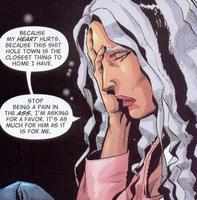 Breccia doesn’t spare the main characters either, who all look like hell. Abby, for instance, is no longer the often idealized beauty of the earlier series. Breccia briefly conjures images of that era, but only to show us that it is decisively in the past. His Abby is harder and harsher, a woman who’s weathered horrible ordeals and has been marked by them.
Breccia doesn’t spare the main characters either, who all look like hell. Abby, for instance, is no longer the often idealized beauty of the earlier series. Breccia briefly conjures images of that era, but only to show us that it is decisively in the past. His Abby is harder and harsher, a woman who’s weathered horrible ordeals and has been marked by them. 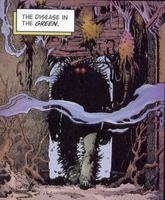 Swamp Thing too has changed since that more innocent time. He is no longer a beautiful vegetable garden, bursting with tubers and flowers, a living nesting ground for birds and insects. Instead, Breccia has conceived of him as a gnarled, walking tree, green but with hard brown roots that twist and prickle from his face and body.
Swamp Thing too has changed since that more innocent time. He is no longer a beautiful vegetable garden, bursting with tubers and flowers, a living nesting ground for birds and insects. Instead, Breccia has conceived of him as a gnarled, walking tree, green but with hard brown roots that twist and prickle from his face and body. 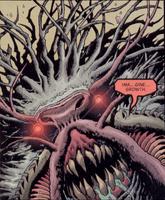 As the story progresses, moreover, and the Green becomes diseased, Swamp Thing becomes increasingly insect-like and terrifying, as hideous as the demons themselves.
As the story progresses, moreover, and the Green becomes diseased, Swamp Thing becomes increasingly insect-like and terrifying, as hideous as the demons themselves.
All of these visual developments are appropriate because they reflect the general approach of the story, which is to insist that while there is a strong continuity between the present and many aspects of the series’s glory days (the retrenched focus on pure horror, the return of Arcane, even the renewal of Swamp Thing’s identity-quest), things really have changed significantly too. The characters have aged and suffered, and they bear the scars of these experiences. A side effect of this development is that the relationship between beauty and horror has changed considerably in the new book. Previously, as I mentioned above, Abby and Swamp Thing were both typically depicted as beautiful. The horror of the series emerged (visually, at least) from the contrast between the beauty of this pair and the hideousness of their antagonists. Horror was presented essentially as a transgression--an invasion of the beautiful bodies of the protagonists by the crawling, skittering legions of Arcane’s unclean beasts, by toxic chemicals, by fire or magic, etc.
A side effect of this development is that the relationship between beauty and horror has changed considerably in the new book. Previously, as I mentioned above, Abby and Swamp Thing were both typically depicted as beautiful. The horror of the series emerged (visually, at least) from the contrast between the beauty of this pair and the hideousness of their antagonists. Horror was presented essentially as a transgression--an invasion of the beautiful bodies of the protagonists by the crawling, skittering legions of Arcane’s unclean beasts, by toxic chemicals, by fire or magic, etc.  In Dysart and Breccia’s series, beauty is still associated to some extent with Swamp Thing--located, for instance, in the strange but lovely crowned flower that Swampy gives the little Cajun girl to care for. And yet, nature (especially in the form of the protagonist himself) seems on the whole more disturbing than reassuring, and the scenes set in Hell and Heaven have a kind of luminous prettiness to them that the human characters lack.
In Dysart and Breccia’s series, beauty is still associated to some extent with Swamp Thing--located, for instance, in the strange but lovely crowned flower that Swampy gives the little Cajun girl to care for. And yet, nature (especially in the form of the protagonist himself) seems on the whole more disturbing than reassuring, and the scenes set in Hell and Heaven have a kind of luminous prettiness to them that the human characters lack.  Rather than simply contrasting beauty and ugliness, Breccia gives us something murkier. It’s hard to know quite what to make of this thorough blurring of the realms of beauty and horror, but I would call its effect grotesque--a term that, as the Wikipedia entry points out, “induces both empathy and disgust.” This is an accurate descriptor of my response to these characters, and it will be interesting to see how successfully Dysart will be able to draw us into a series whose protagonists are somewhat tainted by this kind of ostensibly “negative” ambivalence. It’s certainly easier to feel empathy for Moore or Veitch’s beautiful bayou supercouple, and there’s a danger that the more grotesque Swamp Thing and Abby of this new series will simply end up repelling some readers or feeling like a pale imitation.
Rather than simply contrasting beauty and ugliness, Breccia gives us something murkier. It’s hard to know quite what to make of this thorough blurring of the realms of beauty and horror, but I would call its effect grotesque--a term that, as the Wikipedia entry points out, “induces both empathy and disgust.” This is an accurate descriptor of my response to these characters, and it will be interesting to see how successfully Dysart will be able to draw us into a series whose protagonists are somewhat tainted by this kind of ostensibly “negative” ambivalence. It’s certainly easier to feel empathy for Moore or Veitch’s beautiful bayou supercouple, and there’s a danger that the more grotesque Swamp Thing and Abby of this new series will simply end up repelling some readers or feeling like a pale imitation.  Still, it’s a worthwhile gamble. There’s something exciting too about the possibilities of a series that reexamines these characters in light of history, experience, change, and trauma--a reexamination that finds its emblem in the moral and affective ambiguities of Breccia’s grotesque art
Still, it’s a worthwhile gamble. There’s something exciting too about the possibilities of a series that reexamines these characters in light of history, experience, change, and trauma--a reexamination that finds its emblem in the moral and affective ambiguities of Breccia’s grotesque art
notes
The Golden Age of Hype: Bring Back Amazing Heroes A couple of weeks ago over at Crisis/Boring Change, Chris Tamarri provided an acute diagnosis of the polarized state of comic book magazines, as represented by the impasse between The Comics Journal and Wizard. “If the high artists and the populists had a Constitution,” Chris wrote, “they would probably resemble, respectively, these two magazines. They’re the yin and yang of comics commentary, each defining the other in profile. And without passing judgment on the editorial content of either…it’s possible to say...that the ideological slant of each is clear and, in the case of each, much closer to the border than to the middle. Which is problematic inasmuch as, again, anyone who reads either of these magazines—is there anyone who reads both?—is instinctively inclined to define himself against anyone who reads the other. They might both enjoy, say, Morrison’s Seven Soldiers, but they’ll never realize it, one too busy yelling about the superiority of Geoff Johns, the other of Joe Sacco.” He concluded this post with a rousing call for something better: an Entertainment Weekly-style comics magazine that would, in his words, “pay attention to both high and low culture without overt editorializing about the state of either.”
A couple of weeks ago over at Crisis/Boring Change, Chris Tamarri provided an acute diagnosis of the polarized state of comic book magazines, as represented by the impasse between The Comics Journal and Wizard. “If the high artists and the populists had a Constitution,” Chris wrote, “they would probably resemble, respectively, these two magazines. They’re the yin and yang of comics commentary, each defining the other in profile. And without passing judgment on the editorial content of either…it’s possible to say...that the ideological slant of each is clear and, in the case of each, much closer to the border than to the middle. Which is problematic inasmuch as, again, anyone who reads either of these magazines—is there anyone who reads both?—is instinctively inclined to define himself against anyone who reads the other. They might both enjoy, say, Morrison’s Seven Soldiers, but they’ll never realize it, one too busy yelling about the superiority of Geoff Johns, the other of Joe Sacco.” He concluded this post with a rousing call for something better: an Entertainment Weekly-style comics magazine that would, in his words, “pay attention to both high and low culture without overt editorializing about the state of either.”
This was such a great idea that I couldn’t resist adding my two cents worth (click the link above for the full discussion), which consisted primarily of some useless reminiscing about how much I loved (and miss) Amazing Heroes. There was the magazine, I think, that provided a blueprint for the type of middle road (though definitely not middle-of-the-road!) that comics journalism might follow and that Chris was calling for. It’s been years since I’ve seen my old issues of Amazing Heroes, but as I recall, it combined a bit of hype with a variety of regular columns, reviews, interviews, and longer feature articles on comic book history and culture that didn’t treat its audience like idiots (Wizard) but also avoided the rather...um...superior tone of a certain other publication. True, there is a lot of great commentary available on the web for free, but I agree with Chris that a really good magazine that straddles the line between insular elitism and juvenile populism would be a boon to the medium as a whole.
And while I’m on the subject of comics journalism, I have to mention the fun discussion of the old Marvel Age Magazine that was going on at Mike Sterling’s Progressive Ruin not too long ago here and here. Yeah, sure. Marvel Age was hype. But all the fun extras made it feel like a more innocent kind of hype than cynical exercise in spin control that is Joe Fridays. Good grief. I really am beginning to sound like a cranky old man.
Perry White Meltdown of the Week: JLA #117 I’m over two weeks late getting this up, so someone has probably pointed it out already, but sweet Christopher, just because we loved it when Warren Ellis turned Perry into a maniac in JLA: Classified #10 doesn’t mean that he has to be spitting nails in every scene! Calm down, Perry. And take a look at your desk, right beside your arm, for heaven’s sake. Jimmy already brought you your cup of coffee! It looks like maybe he should’ve left it in the cafeteria... I liked the “Flash” gag, though.
I’m over two weeks late getting this up, so someone has probably pointed it out already, but sweet Christopher, just because we loved it when Warren Ellis turned Perry into a maniac in JLA: Classified #10 doesn’t mean that he has to be spitting nails in every scene! Calm down, Perry. And take a look at your desk, right beside your arm, for heaven’s sake. Jimmy already brought you your cup of coffee! It looks like maybe he should’ve left it in the cafeteria... I liked the “Flash” gag, though. Character to Watch: Katana
Character to Watch: Katana
Is my incessant whining about BATO already beginning to bear fruit? No sooner does Katana show up to dispatch Outsiders villain Fuse than suddenly she’s a regular player, as indicated on this lovely cover to Outsiders #30 by Daniel Acuña. To early to say what’s going on, exactly, but Mark Fossen makes a very good point about the likely significance of Katana’s role in Outsiders 27.
The CrossGen Chronicles (Part 1): Crux #1 As a company and a comics universe, CrossGen had a lot of problems--both logistically and conceptually. But a recent post by Clandestine Critic’s David Norman on the history of the company reminded of how much I enjoyed many of their books and how irked I was that their life was cut short at the very moment when the company seemed poised to resolve its inaugural storyline and launch itself into a more open arena of storytelling. Thus begins an occasional series of notes in which I amuse myself and the other ten folks who bought CrossGen books by remembering some of the things I loved about their books, as well as some of the things I didn’t.
As a company and a comics universe, CrossGen had a lot of problems--both logistically and conceptually. But a recent post by Clandestine Critic’s David Norman on the history of the company reminded of how much I enjoyed many of their books and how irked I was that their life was cut short at the very moment when the company seemed poised to resolve its inaugural storyline and launch itself into a more open arena of storytelling. Thus begins an occasional series of notes in which I amuse myself and the other ten folks who bought CrossGen books by remembering some of the things I loved about their books, as well as some of the things I didn’t.
What got me into CrossGen to begin with? It was all Steve Epting’s fault. My god can that guy draw a picture. Even back on the Avengers his art was fantastic. I saw his promo art in the puff piece on Crux in some issue of CSN and was instantly smitten.  Crux #1 by Mark Waid, Steve Epting, Rick Magyar, and Frank D’Armata was the first CrossGen comic I bought and it absolutely blew me away. Even reading it now, it is an excellent first issue. It sets up multiple mysteries and establishes an array of cool looking settings and attractive characters very quickly. I loved the vastness of the story’s scope, which begins in the year 400,000 B.C. and ends up in the year A.D. 100,000. Along the way it moves from the birth of fire among primitive men, to the classical/technological majesty of Atlantis, an ideologically divided city whose denizens are charged with shepherding the human race to its destiny yet driven by a desire for their own transcendence. The story then jumps far into the future, after Atlantis has been destroyed, and we are treated to some amazing underwater scenes by Epting and Magyar (gorgeously colored by D’Armata) of the ruined civilization.
Crux #1 by Mark Waid, Steve Epting, Rick Magyar, and Frank D’Armata was the first CrossGen comic I bought and it absolutely blew me away. Even reading it now, it is an excellent first issue. It sets up multiple mysteries and establishes an array of cool looking settings and attractive characters very quickly. I loved the vastness of the story’s scope, which begins in the year 400,000 B.C. and ends up in the year A.D. 100,000. Along the way it moves from the birth of fire among primitive men, to the classical/technological majesty of Atlantis, an ideologically divided city whose denizens are charged with shepherding the human race to its destiny yet driven by a desire for their own transcendence. The story then jumps far into the future, after Atlantis has been destroyed, and we are treated to some amazing underwater scenes by Epting and Magyar (gorgeously colored by D’Armata) of the ruined civilization.
I became quite obsessed with this comic when I bought it, and I still derive enormous pleasure from pouring over some of Epting’s pages. Although I was interested in the story, the sheer sumptuousness of the art was the main attraction. Even at the time, I took the visual luxury of this issue as a tacit direction on how to “read” CrossGen’s books: slowly, like an Epicurean, with the understanding that the story was in many ways secondary to the art. My favorite scenes in this issue, the ones that convinced me that this was a book worth paying attention to, were the inverted panoramas of Atlantis, before the fall: ...and after:
...and after: Wow. Brilliantly executed, right down to the birds becoming fish. Very shortly after reading this issue, I went back to the comic store and began sampling almost every title CrossGen published. The one that immediately caught my eye, was a little book called Scion, by Ron Marz and some fellow named Jim Cheung...
Wow. Brilliantly executed, right down to the birds becoming fish. Very shortly after reading this issue, I went back to the comic store and began sampling almost every title CrossGen published. The one that immediately caught my eye, was a little book called Scion, by Ron Marz and some fellow named Jim Cheung...
Attack of the Linkbloggers
I’ve really been appreciating the time an energy that others are putting into surfing the internet and culling the best links so that I can parasitically enjoy the fruits of their labors.
After cruelly threatening to pull the plug on his Sunday link lists, Greg Burgas has proven himself to be a benevolent dictator by relenting and giving us a couple more pages of good (more or less) clean fun to distract ourselves with last week and again this week. I’m trying to think up a good answer to his contest, but I keep getting distracted for some reason...
Shane also posted a really neat set of links over at Near Mint Heroes last week which you should check out if you haven’t done so already.
And while on this topic, here’s a quick link of my own. I didn’t include this site on my blogaround challenge list this weekend because I check it a little too regularly already, but I really wanted to mention it anyway: it’s Kurt Addams’s sensational Return to Comics. I’d add a link to a specific post but there’s really no need. Everything’s good.
Finally, I owe a much belated thanks to a lot of folks for being so supportive of this site, for stopping by and reading, and for sending some traffic my way. Shane, Chris, Greg, Ian, Dave, Zach, Mark, Neilalien, and Disintegrating Clone: you are scholars and gentlemen all.
Forthcoming at Double Articulation in the Weeks Ahead A review of Green Lantern 1-3 that I didn’t quite get to this week; essays on Bill Mantlo and Rick Leonardi’s recently collected Vision and the Scarlet Witch miniseries from 1982; a short essay on analyzing comic books prompted by a comment of Shane’s; a piece about a discovery I made this weekend at a local antique shop; and of course, more blathering about love.
A review of Green Lantern 1-3 that I didn’t quite get to this week; essays on Bill Mantlo and Rick Leonardi’s recently collected Vision and the Scarlet Witch miniseries from 1982; a short essay on analyzing comic books prompted by a comment of Shane’s; a piece about a discovery I made this weekend at a local antique shop; and of course, more blathering about love.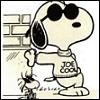
rants
Note: I wrote this rant last week, before I’d read Mark Fossen’s fantastic post outlining what’s wrong with American decompression in general, and with House of M in particular. If I’d read Mark’s article first, I wouldn’t have bothered with this rant, since he explains with focused totality the exact nature of my complaint about Marvel’s shaggiest shaggy dog story. In the unlikely event that you haven’t read Mark’s article yet, do yourself a favor and don’t waste any more time here; go read it! If you have read it, and can stomach yet another litany about how I continue to torture myself with this series, by all means, partake:
From the House of Ideas to the House of M: How Marvel Convinced Me to Wait For the Trade It’s too late now. I’ve already bought the first five issues; I might as well see if things can possibly get any worse. Or more boring.
It’s too late now. I’ve already bought the first five issues; I might as well see if things can possibly get any worse. Or more boring.
And hey. It’s not like this cloud doesn’t have a silver lining or two. Despite Oliver Copiel’s distracting habit of drawing necks like tree trunks, his art on this series is lovely.  And so far, each issue has managed to cough up at least one good scene. Sometimes even two. The exchange between Emma and Logan in her apartment in issue #4 was old-school fun. And I enjoyed Peter’s breakdown on the rooftop in last week’s issue #5.
And so far, each issue has managed to cough up at least one good scene. Sometimes even two. The exchange between Emma and Logan in her apartment in issue #4 was old-school fun. And I enjoyed Peter’s breakdown on the rooftop in last week’s issue #5. And yet, I wonder if there’s I reason that the scenes I’m enjoying are the ones where our heroes gnash their teeth and mutter (probably empty) threats against the architect of this ostensibly perfect world. Now, don’t get me wrong. My feelings about House of M are hardly homicidal. But there’s a rather grim irony in the fact that the problem faced by the characters in this book is exactly the same problem that we face as readers: being trapped in a mind-numbing “utopia” where nothing actually happens. Isn’t Joe Quesada always assuring us that House of M is important, exciting, and big, Big, BIG!? The best of all possible (creative) worlds?
And yet, I wonder if there’s I reason that the scenes I’m enjoying are the ones where our heroes gnash their teeth and mutter (probably empty) threats against the architect of this ostensibly perfect world. Now, don’t get me wrong. My feelings about House of M are hardly homicidal. But there’s a rather grim irony in the fact that the problem faced by the characters in this book is exactly the same problem that we face as readers: being trapped in a mind-numbing “utopia” where nothing actually happens. Isn’t Joe Quesada always assuring us that House of M is important, exciting, and big, Big, BIG!? The best of all possible (creative) worlds?
If Quesada isn’t fibbing--in that great Stan Lee tradition of Barnum-style hucksterism that Quesada has recently praised--then we all have reason to be depressed. Because House of M is one of the most sluggish, tepid, static summer crossovers that I’ve ever allowed myself to be sucked into reading. And if this is the new face of entertainment at Marvel, then the swiftly dwindling number of Marvel titles on my pull-list will soon be shrinking a little more.
House of M is a comic modeled on the summer movie blockbuster in the truest sense: it’s an attractive but ultimately vacuous time-waster that provides a few superficial thrills, but leaves you feeling kind of crummy as you wander back to your car, thinking how else you might have spent that $10.
My displeasure, I know, is entirely my own fault. If it irritates me so much, why don’t I just stop reading it. The horse is dead, Jim; time I stop beating it. How I wish I could. But the sad fact of the matter is that I’m one of Barnum’s ubiquitous suckers, and I just can’t seem to prevent my hand from lurching in the direction of the latest copy of this mini as I pass by the new comics rack. You see, some pathetic part of me wants to believe that the best really is just around the corner, that there will be a sudden revelation that retroactively transforms the quality of the entire series.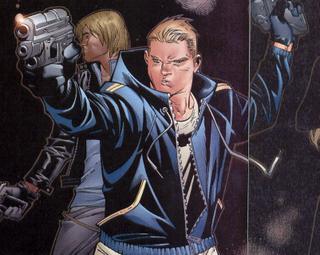 Not for much longer though. And this time I really mean it! Comic book “events” like this one are convincing me of the virtue of waiting for the trade (and for the reviews)—at least where Marvel books are concerned. Despite its “corporate-driven” comics line (are you kidding us, Joe?), DC is knocking the ball out of the park week after week. Yes, I love their characters and their universe, but I buy so many of their books because there’s a palpable sense of commitment to a long-term creative vision at DC right now. Marvel’s recent record in this area is spottier, at least from where I sit, and House of M has deservedly become a galvanizing symbol for the gap between reality and hype at the current Marvel. What this means in practical terms is that I rarely take a chance on a Marvel book, whereas I’m trying out more and more stuff from DC, which is making it easier and easier to prune that Marvel list (Thunderbolts, I’m looking at you!).
Not for much longer though. And this time I really mean it! Comic book “events” like this one are convincing me of the virtue of waiting for the trade (and for the reviews)—at least where Marvel books are concerned. Despite its “corporate-driven” comics line (are you kidding us, Joe?), DC is knocking the ball out of the park week after week. Yes, I love their characters and their universe, but I buy so many of their books because there’s a palpable sense of commitment to a long-term creative vision at DC right now. Marvel’s recent record in this area is spottier, at least from where I sit, and House of M has deservedly become a galvanizing symbol for the gap between reality and hype at the current Marvel. What this means in practical terms is that I rarely take a chance on a Marvel book, whereas I’m trying out more and more stuff from DC, which is making it easier and easier to prune that Marvel list (Thunderbolts, I’m looking at you!).
Meanwhile, I guess I’m going to stick it out with House of M. There’s only 3 more issues to go, and surely it can only get better... I just wish this recent post at Lady, That’s My Skull, didn’t have me laughing...so mirthlesslessly.
Monday, August 22, 2005
SPOILERS ABOUND: a weekly digest of reviews, notes, and rants
Subscribe to:
Post Comments (Atom)
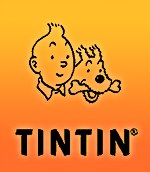



11 comments:
First off, thanks for the kind words and the links. While I’m tired of the Pre-Crisis hype, Villains United is excellent and I’ve even been enjoying Day of Vengeance. (Rann/Thanagar/Donna Troy is impenetrable.) Gail Simone has a real feel for Luthor, unfortunately whatever is to happen in Infinite Crisis clearly involves Lex in a big way so there doesn’t seem to be any way to keep him out of every other DC books – and most of the authors of those are knitting him while they wear 16 ounce boxing gloves. It would be nice if DiDio could limit Luthor’s exposure to Simone and Brian Azzarello but clearly that won’t happen.
You’re right about Amazing Heroes. I still have a number of those first issues and it struck just the right tone. Production quality wasn’t very high, but what was in those days? I suspect we’ll see something like this again soon, the timing is right.
Great post as always.
Wonderful post, Jim.
The only thing is that as I read through, there's so much to coment on that by the time I hit the end, I've forgoten the ideas I had at the start!
I'm with Mark. I will say that you have convinced me to at least check out Villains United when it comes out in trade, because it sounds fascinating. I'm still wary about getting sucked into the vortex that is Infinite Crisis, though - I learned my lesson with Identity Crisis, and have avoided all the subsequent stuff like the plague.
I'm glad you like the links. I'm trying to keep up. Stupid big Internet.
Hi Kurt--it's great to hear your thoughts about all this. Even I have to admit that the excellence of Villains United is proportional to the degree to which it transcends its role as Pre-Crisis set-up. Of all the countdown minis, the one I enjoy least is OMAC precisely because it is the one that is most obviously doing the heavy lifting of plot set-up. As much as I love the superdense continutity that massive crossover stories promise (though only sometimes deliver) they always have to contend with the clunkier aspects of plot advancement and clearly court the danger of reducing everything to a kind of grey smear. I think that, despite the bumps, DC's not doing too bad a job of combatting these dangers, but I expect that the real re-energizing of their line will occur with the "One Year Later" and 52* series. Nothing like starting in medias res to make things interesting.
About Luthor: I completely agree. Less is more. He's such an important character that he shouldn't be diluted by overexposure, much less knitted by writers wearing boxing gloves (!). You'd think DC would have figured that one out.
Re: Amazing Heroes--I really hope you're right about the timing for something comparable to emerge. It makes sense given what appears to be a fairly substantial shift in general public awareness of comics of all sorts over the past ten years or so, though I don't want to get my hopes up! My ideal would be a smart glossy mag like EW, but frankly I'd even be content with a newsprint version that had the low production values of the original. In today's climate it would feel like a sort of antidote to the absurdity of current hype levels. Thanks a lot for the comments!
Mark: lol! I know, there's something a bit wonky about the jumbo-sized Spoilers Abound format. I like the bulkiness of the pseudo-"digest" idea, but I certainly don't want to discourage comments! Were I skilled in the ways of html, I'm sure I could find an ingenious technical solution that would provide the best of both worlds. Failing that, if anything does occur to you, please don't hesitate to pop back in!
Greg--I'm glad to hear that I piqued your interest in Villains United. It's definitely the richest of the 5 series. Something I meant to comment on but didn't get around to is issue three--the torture issue. This is a big gap in the review and I admit that I didn't get into it because I'm frankly not quite sure how I feel about it. It bothered me quite a bit, for a number of different reasons, but I like the rest of the series so much that I'm reserving judgement about it. Anyway, if you do end up getting the trade, I'd be very interested to hear what you think.
"I like the bulkiness of the pseudo-"digest" idea, but I certainly don't want to discourage comments!"
Maybe just split it into seperate posts, but post them all on the same day? Then it would still be one massive update, yet have seperate comments sections.
"My ideal would be a smart glossy mag like EW, but frankly I'd even be content with a newsprint version that had the low production values of the original. In today's climate it would feel like a sort of antidote to the absurdity of current hype levels."
Why not start an "online" version of this and then if it's succesful enough you can release a print version of the magazine. A PDF or Flash mag put together by commentators around the blogosphere would be wonderful and I'd be glad to contribute whatever I could. Care to give it a go?
Why not start an "online" version of this and then if it's succesful enough you can release a print version of the magazine. A PDF or Flash mag put together by commentators around the blogosphere would be wonderful and I'd be glad to contribute whatever I could. Care to give it a go?
Hi Shane--wow! What a great idea. And thanks for the vote of confidence! All credit to Chris Tamarri whose idea I blatantly ripped off and painted with the veneer of my own nostalgia for Amazing Heroes. Even though I think it's essential to have print magazine to hold in one's hands, if I could clone myself right now I'd say let's call Chris and get started! Truth be told, however, I'm already burning the candle at both ends just trying (and failing!) to keep up with my own little blog while attempting to balance the demands of my new job! I love the idea though--and it may be something I could seriously consider in a year or two once my work life is a little more stable. Goodness knows there's no shortage of smart bloggers out there right now who could make such a publication shine...
Regarding the digest/commentary issue: your suggestion is clearly what any sensible person would do, but I can't quite bring my stubborn self to relinquish the single post. (I never claimed to be sensible.) I do have a technical compromise in mind, however, that will at least make S.A. easier to navigate (even if it won't solve the problem of comments). Watch for the startling innovations soon...I think. (And skilled computer types reading this, try to stifle your laughter at my techno-incomptence.)
On the subject of lateness and anticipation, I'll finally be posting that overdue reply to the question about interpretation that you raised awhile back, Shane. I hope you won't mind that I've blown the original question up a bit; it was a great comment and it really got me thinking about my approach to interpretation. The end result is that I've made it bear a lot more weight than you probably intended it to originally--hope this is alright! The mini-epic should be up by tomorrow afternoon.
"and it may be something I could seriously consider in a year or two once my work life is a little more stable"
In a year or two then. :)
"Regarding the digest/commentary issue: your suggestion is clearly what any sensible person would do, but I can't quite bring my stubborn self to relinquish the single post. "
No problem. I like the single post myself.
"Watch for the startling innovations soon...I think."
Adding links at the top of each post that jump down to each section? (targets?)
"On the subject of lateness and anticipation, I'll finally be posting that overdue reply to the question about interpretation that you raised awhile back, Shane."
I've read about half of it so far. I'll be back to read the rest later. :)
In a year or two then. :)
Yes!
Adding links at the top of each post that jump down to each section? (targets?)
I knew there was a name for them! Sad that it's taken me this long to figure this out...
I've read about half of it so far. I'll be back to read the rest later. :)
Take your time--it's verbose even for me! And thanks again for the question--as you can no doubt tell it sent my brain into overdrive.
I really, really enjoyed this, and not because it's so kindly positive, but because it's thoughtful and curious. Thanks for a great read, that makes me wonder if you've been reading my notes. This in particular, "hat is, they operate not simply outside the laws of the state but outside the “unwritten” laws of restrictive social norms. The appeal of a series like this (for me at least) is that the antiheroes’ literal status as criminals is less important than the metaphorical “lawlessness” this status bestows" is a very interesting sentiment that I'm glad people 'caught,' as it were.
Thanks again, great stuff!
Gail
See, even Gail likes your blog. We told you that you were cool. ;)
Wow, that was a nice surprise! Hi Gail--my pleasure, and thank you for reading and for taking the time to post such a nice comment! I'm glad I wasn't too far off the mark. Can't wait to see what happens next in VU and in BoP!
Post a Comment